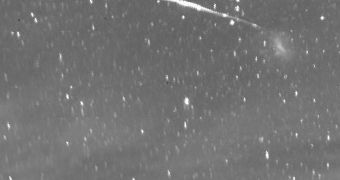Those of you who enjoy gazing at the sky are in for a treat tomorrow, and a week after tomorrow, as the so-called Taurid meteors will provide a great meteor shower show. The meteors are rocky and dusty fragments of a once larger body, diving into Earth's atmosphere at incredible speeds, while the heating of their gas particles creates a bright trail in the process. These particular meteorites are called Taurids since their routes can be traced to the constellation Taurus.
They are coming from a large circle of comet debris surrounding the Sun in the aftermath of the disintegration of a former giant comet. Our planet has been crossing this debris field since the start of last month, and will reach its densest portions on November 5 and 12. The former date is highly recommended for sky gazing, since on the latter the phenomenon might by obscured by the shining of the nearly-full Moon. Although the phenomenon is more visible from the northern hemisphere, it can also be observed from the southern regions for about 3 to 5 hours around midnight.
This year's intersection with a “swarm” of Taurids meteoroids might result in a more spectacular “fireball” show than that provided by Leonid or Perseid showers, which are known to surpass the Taurids in meteor numbers. It is even more imperative that you watch this event since it does not occur very often. The Taurid swarm only orbits the Sun every 3.4 years, and so it is not every year that our planet crosses it.
Even more, the angle of the intersection, as scientists claim, is even more proper for an event of a longer duration. According to David Asher from the Armagh Observatory in Ireland, “it should just be within what we think is the extent of the swarm,” which could yield a ration of about 20 Taurid fireball-like meteors per hour. Last time such an event occurred was in 2005, when witnesses claim the fireballs surpassed Venus in brightness.

 14 DAY TRIAL //
14 DAY TRIAL //